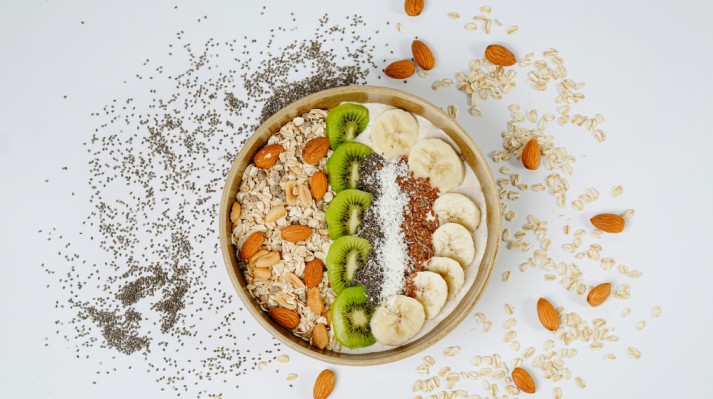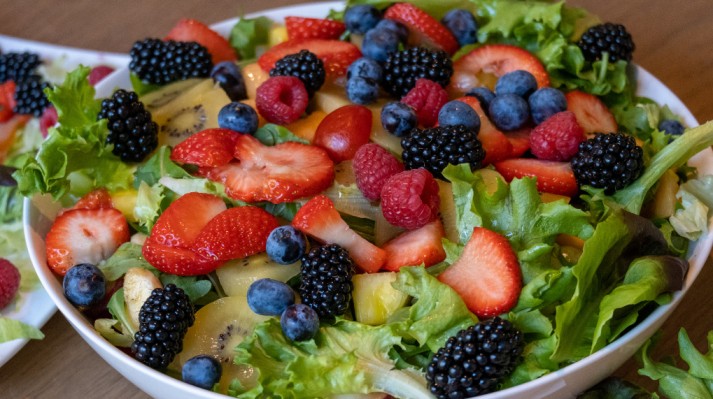Diabetes is indeed a very bad health condition. But, wait – you need not stay away from sugar just because you have diabetes. Managing diabetes is all about making smart choices with respect to the foods that might spike your blood sugar levels.
For many people, fruit juice is a tempting beverage that feels healthy, but for diabetics, it can be a double-edged sword. That has a reason. Fruit juices, even the natural ones, can spike your blood sugar levels, as they do not have fibres to slow down sugar absorption. Yet, there are a few fruit juices which, when consumed carefully, can help you enjoy without increasing your sugar levels.
In this blog, we’ll help you navigate the fruit juice aisle (and your kitchen) with diabetes-friendly options approved by nutritionists at Qua Nutrition.
Should People with Diabetes Drink Fruit Juice?
That can be a tricky question. Fruits and fruit juices are a rich source of vitamins, minerals, and antioxidants. But they also have liquid sugars in a concentrated form.
This can result in
- Blood Sugar Spikes: Without the fiber from whole fruits, sugar gets absorbed faster.
- Satiety Issues: Juice doesn’t fill you up the way whole fruit does
- Portion Pitfalls: A “glass” of juice can contain the sugar of multiple fruits.
Eating whole fruits may be a good option. They contain fibres and can help in proper sugar absorption. But juices do not have fibre. This can instantly increase your sugar levels even when you are not adding any additional sugar to your juices.
Controlling your portion is what helps in controlling the sugar spikes. Stick to half a cup of juice per serving and consider diluting it with water to reduce sugar concentration.
Tip – If possible, choose whole fruits instead of juices. You can consume juices only during a few special occasions, when you have low sugar episodes and of course, when suggested by a nutritionist.
Nutritionist-Approved Fruit Juices for Diabetics
Well, a fruit juice fan? You can check out a few juices here that are approved by expert nutritionists. We at Qua Nutrition typically advice the following juices to our clients –
Pomegranate Juice
Glycemic Index (GI): Low to moderate
Benefits
It is packed with antioxidants that protect the heart. That should be quite important for people with diabetes prone to cardiovascular risks.
Tip: Choose fresh pomegranate juice without added sugar.
Amla (Indian Gooseberry) Juice
Glycemic Index: Very low
Benefits
It is known in Ayurveda for supporting blood sugar control and boosting immunity with Vitamin C.
Tip: Best consumed fresh and diluted for taste.
Tomato Juice (yes, it’s a fruit)
Glycemic Index: Low
Benefits
It is quite low in carbs, anti-inflammatory, and heart-healthy.
Tip: Go for unsalted, homemade versions to avoid hidden sodium.
Bitter Gourd (Karela) Juice
Glycemic Index – Low
Benefits
It consists of the compounds that help you lower your blood sugar levels.
Tip – You can add cucumber or tomato juice to reduce the bitter taste.
Mixed Berry Juice (Unsweetened)
Glycemic Index – Low
Benefits
They are rich in antioxidants and do not contain much sugar.
Tip – You can blend fresh berries with water for a refreshing taste.
Tips for Safe Juice Consumption in Diabetes
Apart from choosing the right fruit juices, you should also learn to follow a few tips to ensure that you can enjoy your juices without affecting your health.
- Avoid adding sugars or even artificial sweeteners to the juices.
- You can mix vegetables and fruits for a refreshing mix. It can improve nutritional value and enhance flavour.
- Always drink fresh juice immediately. It has better health benefits.
- Drink juice alongside nuts or a whole-grain snack to slow sugar absorption.
Juices to Avoid or Limit
While we always suggest drinking fruit juices in moderation, it should be remembered that some juices can spike sugar levels to extreme levels.
- High sugar fruits – Always avoid fruits that have a very high sugar content. Orange juice, apple juice, and grape juice are popular culprits.
- Fake labels – Juices available in the market may be labelled diabetes friendly. They often contain artificial sweeteners and hidden sugars.
- Desserts – Smoothies loaded with syrups, ice cream, or milk powder.
Best Time to Drink Juice (If at All)
Well, we at Qua Nutrition always suggest in favour of whole fruits instead of fruit juices. However, if you have to drink juices, it is best practice to follow a few guidelines with respect to when to drink them.
- During or After Meals: This slows sugar absorption.
- Not on an Empty Stomach: Prevents sharp spikes.
- When Treating Hypoglycemia, Juice can help quickly raise low blood sugar in emergencies.
Homemade Juice Ideas for Diabetics
You can use a few of the recipes below to ensure that you do not find it monotonous.
Amla + Mint Juice
Ingredients
2 fresh amlas (Indian gooseberries), deseeded
A handful of fresh mint leaves
½ tsp cumin powder
1 cup chilled water
Method
Blend amla and mint with water until smooth.
Strain if desired.
Add cumin powder and serve chilled.
Cucumber + Tomato Juice
Ingredients
1 medium cucumber
2 ripe tomatoes
A pinch of black salt
½ tsp lemon juice
Method
Chop the cucumber and tomatoes.
Blend with water until smooth.
Add black salt and lemon juice before serving.
Pomegranate + Lemon Water
Ingredients
½ cup fresh pomegranate seeds
1 cup chilled water
½ tsp lemon juice
Method
Blend pomegranate seeds with water.
Strain to remove pulp if preferred.
Add lemon juice and mix well.
Diluted Mixed Berry Juice
Ingredients
½ cup mixed berries (blueberries, raspberries, blackberries)
1 cup chilled water or soda water
A few mint leaves (optional)
Method
Blend berries with water until smooth.
Strain if desired.
Serve with crushed mint for freshness.
Carrot + Bitter Gourd + Turmeric Juice (Small Serving)
Ingredients
1 small carrot
½ small bitter gourd (karela)
¼ tsp turmeric powder (or small fresh turmeric root)
½ cup water
Method
Deseed the bitter gourd and chop all vegetables.
Blend with water until smooth.
Strain, then drink immediately in small quantity (¼–½ cup) due to bitterness and potency
Juice vs Whole Fruit: Nutritionist’s Take
At Qua Nutrition, our emphasis has always been on eating whole fruits rather than drinking fruit juices.
Whole fruits have fibres that help in slowing down the absorption of sugar. It can also support better gut health. Even when you are not adding any additional sugar or sweeteners, juicing itself removes the beneficial fibers. That way, sugars are concentrated and can result in extreme sugars in your blood sugar levels.
Our advice is to keep the fruit juices only for special occasions and eat whole fruits on a daily basis.
When to Consult a Nutritionist?
Well, those were just a few guidelines. However, if you have diabetes, do not rely upon guidelines, but look for guidance.
You can consult a dietitian or nutritionist for the following needs –
- A properly personalised diet plan based on your health conditions
- You can also consult them if you are unsure about the effects of fruit juices on your blood sugar.
- Nutritionists can also help you track your glycemic responses using Continuous Glucose Monitoring (CGM) for precise adjustments.
Choosing Wisely: Juices That Support Blood Sugar Balance
Having diabetes need not mean you have to cut down all your fruit juice intake. Of course, you need to check out portions and prioritise nutrient value over sweetness. Juices like pomegranate, amla, and bitter gourd can be safe in moderation. They are best when balanced with fiber-rich meals.
At Qua Nutrition, we create personalised nutrition plans that help you manage your blood sugar while enjoying a variety of foods and beverages. You may be an athlete, a busy professional, or simply working on your health goals. In every case, our experts guide you every step of the way. Contact us now to speak with the experts.
FAQs
Q: Can diabetics drink fruit juice?
Yes, but only in small portions. Juices lack fiber and can spike blood sugar quickly. Whole fruits are safer.
Q: Which juices are safer for diabetes?
Pomegranate, amla, tomato, bitter gourd, and unsweetened mixed berry juices—when fresh and diluted—are better options.
Q: When should juice be consumed?
During or after meals, never on an empty stomach. Juice can help treat low sugar episodes (hypoglycemia).
Q: What juices should be avoided?
Orange, apple, and grape juices are high in sugar. Also avoid packaged juices with hidden sweeteners.
Q: Should I consult a nutritionist?
Yes. A nutritionist can tailor your diet, monitor sugar responses, and guide safe juice choices.









